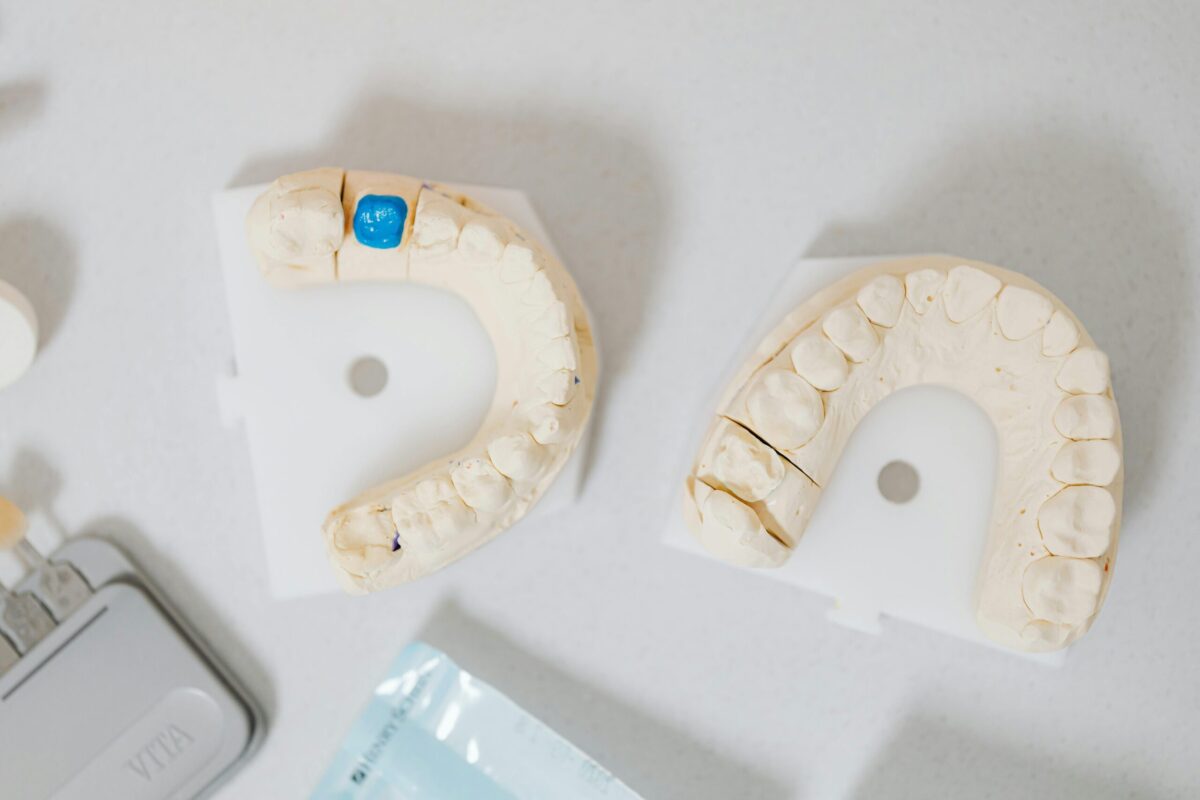
A dental crown should feel natural. It should let you chew, smile, and speak without a second thought. People often ask a simple question before or after treatment. How long will it last? The good news is that you can influence the answer every day with easy habits. Below is a plain guide to lifespan, day-to-day care, and what to watch for over the first months and the years after. It is written for Australian patients and keeps the language clear.
What really affects the lifespan of dental crowns
Several factors work together. None of them is complicated on its own. Together, they decide how long your crown stays strong and comfortable.
- Bite forces. Heavy chewing, clenching, or grinding places an extra load on a crown.
- Cleanliness at the edges. The margin where the dental crown meets the tooth must stay clean.
- Diet and chewing style. Very hard or sticky foods challenge any restoration.
- Material choice. Modern ceramics are strong. Fit and polish also matter.
- Gum health. Healthy gums seal the edge and make cleaning easy.
- Review rhythm. Light bite tweaks and a polish now and then keep things smooth.
Think of a crown like a high-quality shoe. It performs best when it fits, you walk with balance, and you clean and care for it.
The first 48 hours after a new crown
Your aim is comfort. Keep things simple so the cement sets well and your bite settles.
- Choose soft, easy foods. Warm soup, pasta, rice, fish, and ripe fruit.
- Chew on both sides if it feels even. If not, favour the comfortable side for a day.
- Brush gently along the gum line that night.
- Floss with a slide-out motion so you do not tug on a fresh edge.
- If your dentist supplied a night guard, start using it from day one.
If anything feels a touch high, call the clinic. A tiny adjustment can make a big difference and is usually quick.
Daily routine that protects the margin
A crown is as strong as the tooth it covers. Keep the tooth healthy, and the crown stays happy.
- Brush twice a day. Use a soft brush. Angle the bristles at the gum line.
- Floss once a day. Slide the floss in. Clean the sides. Slide it out.
- Add a water flosser if you have tight contacts or a bridge.
- Use a non-abrasive toothpaste to protect the polish.
- Rinse with water after coffee, tea, or wine. It takes seconds and helps a lot.
Make this routine automatic. Most people find it takes less than three minutes.

Small food tweaks that pay off
You do not need a special diet. A few small habits do the heavy lifting.
- Cut firm fruit and veg into bite-sized pieces.
- Avoid crunching ice or very hard lollies.
- If a food stretches like toffee, chew it slowly or choose another treat.
- Eat nuts and seeds with care if they get caught between teeth.
These are simple choices. They reduce sudden force on edges and keep the bite even.
Grinding and clenching
Many people grind in their sleep and do not realise it. Signs include a tired jaw on waking, flat edges on teeth, or small chips on natural enamel.
- Wear your night guard if one was made for you.
- Keep caffeine lower in the afternoon.
- Try a gentle jaw stretch and a short walk after dinner.
- Mention any morning jaw tension at your next review.
Protecting the crown from night forces extends lifespan more than most people expect.
Reviews that make crowns last
Regular checks do not only look for problems. They fine-tune success.
- Your dentist checks the bite with thin coloured papers.
- They polish tiny edges so your tongue glides.
- They test floss points. Glide means easy daily cleaning.
- They clean the crown and the nearby gum line.
Most people book six-monthly hygiene visits. Some prefer four-monthly if they have lots of crowns or bridges. Pick the rhythm that keeps your mouth feeling fresh.
Planning your appointment schedule and options with a clinic is easier when the steps are explained well. If you want a clear overview, you can skim before you book to see the dental crown cost. It outlines choices and timing in one place.
Dental crowns on teeth that had undergone root canal therapy
A tooth that has had root canal treatment can be more brittle over time. A crown protects it by spreading pressure. Your dentist may also add a core for support. Expect a careful bite check so contacts are even and comfortable.
If you already wear a night guard, bring it to the fit visit. The team will confirm the contact points with the new crown in place.
Sports, travel, and big life weeks
Crowns fit normal life. A few tips help during busy periods.
- Playing contact sports. Use a custom mouthguard. It protects teeth and crowns.
- Flying or long travel days. Pack your brush, floss, and any guard in your carry-on.
- Wedding week or photos. Schedule a quick polish and review a few days ahead.
- Holidays. Keep a mini brush and floss picks in your bag. Small tools, big gains.
Whitening and your new dental crown

Porcelain does not whiten like enamel. Plan the crown shade after any whitening treatment, not before it. If you are thinking about whitening, chat with your dentist early. They will set the order so everything matches.
Sensitivity and comfort
It is common to feel a little newness as your bite settles. Light sensitivity to cold often fades quickly. A gentle toothpaste for sensitive teeth is fine to use in the short term. If you notice a tiny tap when chewing, book a short visit. A quick polish brings balance back.
Signs to share at your next check
Keep a short note on your phone. Mention anything that stands out. Your dentist will appreciate the detail.
- A spot where floss frays or catches.
- A food that always packs in one place.
- A word or sound that makes your tongue notice an edge.
- Any morning jaw tiredness or night guard issues.
These notes lead to small adjustments that feel great.
Dental crown and gum health over time
Healthy gums frame a crown and make it look natural. They also protect the margin. If you see redness at the edge, it often means plaque is settling there. Spend ten extra seconds on that area at night. If it stays red, ask your hygienist to check the brush angle and floss technique. Small changes pay off fast.
FAQs
Can I floss around a crown?
Yes. Floss as normal. Slide out rather than snapping up. You will get used to the feel in a day or two.
Do dental crowns get decayed?
Decay does not form on ceramic. It can form. on the tooth next to the edge if plaque sits there. Keep the margin clean and you avoid that risk.
How soon can I eat normally?
Most people return to a normal diet very quickly. Start with soft foods on day one. Add texture as it feels comfortable.
Can I use a water flosser?
Yes. It is helpful under bridge spans and around tight corners. It supports floss; it does not replace it.
Will I need to replace the crown?
Crowns can last many years with good care. Reviews keep them in top shape. Your dentist will tell you early if a refresh is wise.
Can I grind my teeth with a crown?
Yes, but protect it. A night guard spreads force and keeps the edges safe. Bring it to review visits so the fit stays perfect.













